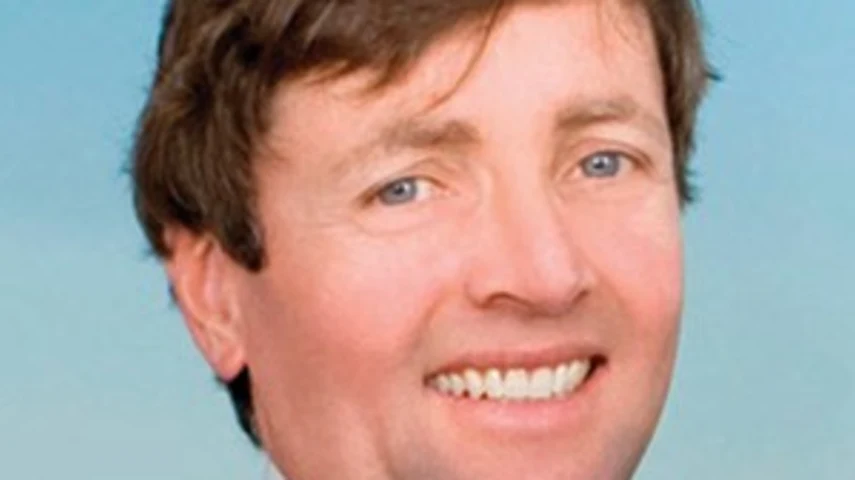Doom, gloom or boom? The outlook for global markets



If Harvard professor Larry Summers is to be believed, the US – and the world – can expect bleak times ahead, with sluggish growth and an ever-increasing jobless rate. But perhaps the phenonemon of ‘secular stagnation’ is too simplistic, writes Michael Collins.
Larry Summers, former economic adviser to the White House and Harvard professor, was Barack Obama’s first pick to be the new head of the Federal Reserve. Democrats blocked his ascension so he withdrew from the race and the role went to Janet Yellen.
At the International Monetary Fund’s recent economic forum, Summers laid out in 16 minutes the great challenge that the incoming Fed head faces when she takes over this month. He spoke of a problem he called “secular stagnation”.
Like all powerful speakers, Summers spoke without notes, without slides and only referred to the term secular stagnation once. He sat at a podium and without theatricality asked why the US economy was performing so far below its potential four years after a crisis.
More challengingly, he pointed out that even before the crisis of 2007-08, when technology and housing bubbles were rampant and fiscal policies expansionary, aggregate demand stayed sluggish and inflation kept low. His analysis pointed to one outcome; that the US (hence world) economy faced languid growth for years to come.
Within days the phrase secular stagnation was a cliché as other economists agreed, with caveats, that US aggregate demand has been hobbled for decades and the outlook could well be only one of Japanese-style stupor. After all, if a bubble economy can’t crack full employment and generate a touch of inflation, what chance that a post-crash economy can?
The term secular stagnation is one that investors will hear a lot in coming years for there is no responsible way to accelerate global growth to levels that will restore full employment any time soon.
Summers wasn’t the first person to offer such gloomy predictions and not everyone is as pessimistic. His analysis wasn’t all-encompassing.
He didn’t even invent the term secular stagnation. He just nailed today’s core economic challenge in such an eloquent way, even if he used jargon in patches, that he could well have created a tipping point where the consensus among economists on the global outlook shifted from hope towards despair.
One optimistic response is that this pessimism may allow the implementation of credible remedies. The other hopeful rebuttal to Summers’ view is that unwitting fixes are being made within economies that will dispel such despondency before too long.
US Harvard economist Alvin Hansen (1887-1975), as Summers noted, conceived the term secular stagnation in the 1930s to highlight how an absence of growth catalysts such as an expanding population and new technology prolonged that era’s depression.
Hansen, who exerted vast influence in shaping US fiscal policy in the 1940s, came to prominence in the late 1930s for pushing the then-heresy that government intervention via fiscal spending and wage controls could restore an economy to full employment, even if there was a trade-off with higher inflation to do so.
The passionate Keynesian invented the expression as a different way to describe Keynes’ analysis on how an economy can get stuck with too many jobless.
Stagnant challenges
Summers’ analysis justifies government intervention too. It’s just by focusing on the limits and counterproductive nature of loose monetary policy, Summers showed how little chance such intrusion has of success nowadays.
For decades (in line with the IS-LM curve that Hansen co-developed), central banks have cut cash rates to restore their economies to full employment. Summers noted that the US has had interest rates at essentially zero since 2009 yet still the recovery is slow and the economy far from full employment.
While the most-watched jobless rate is at 6.7 per cent, a more-encompassing rate is nearly double that at 13.1 per cent. This official measure includes part-timers who’d prefer to be full-time and those who have quit the workforce in despair.
The snag, according to Summers, is that the interest rate level that would balance investment and savings and restore the economy to full employment – often called the natural or equilibrium interest rate – is now negative. Even unorthodox policies, such asset buying (quantitative easing) that suppress longer-term rates, have failed to push the economy towards full employment.
The longer-term challenge for policymakers is what happens if another recession hits. Central banks cannot endlessly expand their balance sheets to buy assets. Governments can’t have perennial fiscal deficits. Cash rates are already as low as they can go.
“Conventional macroeconomic thinking leaves us in a very serious problem,” Summers said in his speech in November.
“We all seem to agree that whereas you can keep the federal funds (cash) rate at a low level forever, it’s much harder to do extraordinary measures beyond that forever, but the underlying problem may be there forever.”
Then Summers delivered his line that punctures much optimism about the world economy, for he referred to the imbalances that promiscuous monetary policies may well be fanning in asset markets.
“The ability of the economy to generate adequate demand is so impaired that we are getting financial bubbles before we get full employment. In consequence, under current policies, episodes of full employment are fleeting and unsustainable.”
This is the conundrum he painted for Yellen; economic torpor, asset bubbles and negative natural interest rates, which Summers estimates could as high as minus 3 per cent.
It’s a mixture that points to greater fighting between labour and capital over a shrinking pie. It’s a blend that will make it harder to engineer world trade agreements, which would spur growth.
It’s a concoction that points to coming generations being worse off than their parents and the political consequences of that – namely, an environment ripe for radicals and populists. It’s a combination that could prove lethal for Europe, for governments need growth to escape their debt burdens and even defaults.
“If Mr Summers is right, the eurozone is dead,” said Wolfgang Munchau in a comment piece for the Financial Times last year.
Solutions
The phenomenon of negative interest rates is one of too much savings and too little investment, which harks to the major imbalance in the world economy since the late 1990s.
These are current-account-surplus-generated flows of capital (savings) from east Asia (China), oil producers and export stars (Germany) that swish to the rest of the world.
Over the past 15 years, these streams of money tended to inflate asset markets in current-account-deficit countries, often via household borrowing, especially in the US and other countries with housing bubbles.
They weren’t used by businesses to invest, which has left GDP lagging its long-run potential in these countries.
Why didn’t businesses in the developed world invest? Some blame the rise in inequality because it robs an economy of its purchasing power as the rich save more than the poor.
Others say businesses in ageing societies face fewer opportunities.
Others cite an unwillingness by business to take risks. A few fault the bonus culture, which encourages a focus on the massaging of share prices rather than laying down a long-term future for companies.
There are solutions to the prospect of secular stagnation, a term that appears more suited to the Eurozone and Japan than the US until it’s pointed out that the US recovery is the slowest on record in terms of the economy regaining its previous employment peak.
The most obvious cure is for governments to take steps to boost investment. Policymakers can encourage private investment by easing restrictions or by offering tax incentives.
Perhaps more crucially, governments can boost public investment by investing in infrastructure.
Such spending will add to fiscal deficits. It thus faces political difficulties, and Japan’s experience shows that much of this spending can be wasted on roads-to-nowhere projects.
But if governments are investing in appropriate capital works, whether that be ports or broadband, they will be boosting future growth, thus creating an environment whereby public debt can be more readily paid off. Given how low interest rates are, there will rarely be a better time for governments to borrow for fruitful projects.
And then there’s the possibility that Summers is overstating the case for endless stagnation. The world could simply be undergoing the sluggish growth that is to be expected after a financial crisis.
Carmen Reinhart and Kenneth Rogoff, in their book ‘This Time is Different’, found that the damage from a financial binge takes years to repair.
Perhaps the best counterattack on Summers has come from Mark Carney, the Governor of the Bank of England. He recited the names of economic pessimists of yesteryear who were proved wrong soon enough.
“Don’t forget that the US economy is more than 13 times larger than when Hansen first formulated his ideas,” he told a gathering in New York in December.
That fact alone perhaps points to Summers’ likely mistake. He appears to be underplaying the fact that economic booms sow their own demise and recessions create their own revivals, largely through pent-up demand after time has allowed the worst excesses to be tackled. (US households, for instance, have reduced their debts since 2007 and banks are in better shape).
More public investment will no doubt pull forward the next sustainable economic upturn, just as radical policy action has limited the damage of the downturn since 2008.
But a decent-enough (rather than tear-away) recovery is probably coming anyway.
For that is the nature of the economic growth and economic cycles in the absence of political tumult including wars.
Innovation and the desire by parents to leave a better world for their children drive long-term economic growth.
Economies have built-in mechanisms to drive economic cycles, even if those recoveries can sometime come too slow for many – including the most articulate and respected of economists.
Michael Collins is an investment commentator at Fidelity.
Recommended for you
In this episode of Relative Return Insider, host Keith Ford and AMP deputy chief economist Diana Mousina take a look at the Reserve Bank’s unanimous decision to leave rates on hold on Melbourne Cup Day and whether future cuts are still on the cards.
In this episode of Relative Return Insider, host Keith Ford and AMP deputy chief economist Diana Mousina break down the spike in inflation numbers and what it means for the possibility of a rate cut as we move into the new year.
In this episode of Relative Return Insider, host Keith Ford and AMP economist My Bui explore Prime Minister Anthony Albanese’s trip to the US and the critical minerals deal stemming from his meeting with President Donald Trump.
In this episode of Relative Return Insider, host Keith Ford and AMP chief economist Shane Oliver unpack the latest unemployment numbers and what they mean for a rate cut, as well as how the latest flare-up in the ongoing US–China trade dispute has highlighted the remaining disparity between gold and bitcoin.







